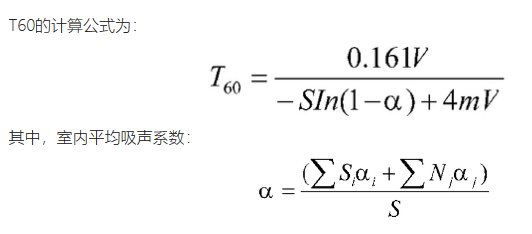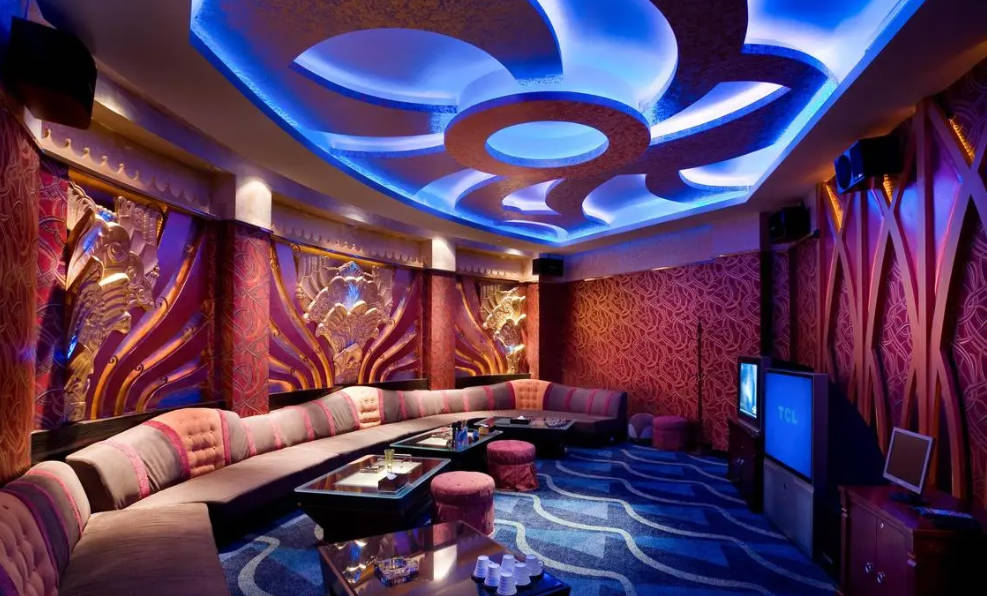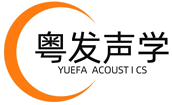notice:
Search:
KTV noise acoustic solution

admin
Acoustic PET Felt Panels Factory | Akupanel & Acoustic Wall Panels Manufacturer - Guangdong Yuefa Acoustic New Materials Co., Ltd
The main source of KTV noise is driven by high-power subwoofer speakers, mainly consisting of mid to low frequency noise, which has strong penetration ability of mid to low frequency sound waves
The propagation distance is long and the attenuation coefficient is low. Usually, it can penetrate the wall directly to reach the steel reinforcement structure, which brings great difficulties to the lives of the surrounding people
Disturbance. At the same time, entertainment can indirectly affect others.

We usually control KTV noise from the following aspects and have achieved good results through these treatments
To minimize noise and provide people with good enjoyment while enjoying life.
With the development of cities and the improvement of people's living standards, KTV entertainment venues are playing an increasingly important role in cities. However, one of the accompanying problems is the impact of KTV noise on surrounding residents and the environment. Therefore, KTV noise control has become one of the urgent problems to be solved in current society.
The impact of KTV noise on surrounding residents is obvious. At night, when residents hope to enjoy tranquility, KTV noise may disrupt their lives and affect their rest. This not only leads to a decline in the quality of life of residents, but may also trigger social conflicts and disputes. In addition, KTV noise may also cause damage to the surrounding environment, affecting the overall image and environmental quality of the city.

1. Apply sound insulation treatment to the floor
In order to block solid sound transmission caused by vibration and shock waves, a suspended floor must be installed on the ground, and the setting of the suspended floor needs to consider the overall situation comprehensively
The treatment of vibration reduction includes the natural frequency and load-bearing capacity of the ground vibration reduction layer. The design of suspended flooring generally has a thickness of approximately 110-150mm.
2. Provide sound insulation and absorption treatment to the ceiling
KTV private room indoor ceiling installation with double-layer sound insulation ceiling, each layer of sound insulation ceiling adopts different settings to achieve broadband sound insulation and colleague sound insulation
Adding damping and sound insulation materials to the ceiling to meet the needs of improving the ability to isolate mid to low frequency noise. Sound absorbing materials are installed between and above the sound insulation ceilings
The setting of materials should be well bonded with the soundproof ceiling treatment to prevent vibration of the soundproof ceiling caused by the shock wave of the speaker, which can cause vibration of the sound-absorbing material
Low sound insulation and noise reduction effect.
3. Sound insulation treatment for doors and windows
Part of the room windows can be sealed and replaced with brick wall structures for civil engineering. For high demand rooms such as luxury rooms and presidential rooms
An additional layer of soundproof glass window can be added to form a double-layer soundproof window. The processing of doors mainly involves the front and rear doors, with the front door being able to set up two doors
A gate, forming a living gate. Require the installation of high-level soundproof doors to reduce the solid transmission caused by the direct impact of speaker shock waves on the soundproof doors
Sound.
The sound insulation and noise reduction treatment of KTV needs to start from various structural parts, and finally comprehensively achieve a good noise control effect for the entire KTV.
This plan is formulated based on the specific application needs of KTV, combined with our previous work experience in similar projects, based on existing national standards and specifications, and referring to international general specifications, in order to achieve good acoustic characteristics of the entire private room environment, that is, appropriate sound pressure levels, and better adjust the sound field to the best state to meet the needs of KTV use.
The design area of small private rooms should be 8-11 square meters, medium private rooms should be 15-18 square meters, large private rooms should be 24-30 square meters, and extra large private rooms should be above 55 square meters.
Project Name: KTV Private Room Sound Absorption and Noise Reduction Project
Construction materials: polyester fiber sound-absorbing board, fabric soft package
Acoustic design objectives and standards
In order to ensure the normal operation of KTV, the acoustic effect of KTV cannot only rely on high-end sound systems, and it is also impractical. It is necessary to create a good acoustic environment for good sound systems, so that the sound level can be fully displayed. This requires architectural acoustic design, which should be fully integrated into the decoration of KTV from beginning to end. In fact, the investment in acoustic decoration is often lower than that in luxury decoration. Places that have undergone acoustic design and decoration by Yuefa will have better sound effects.
Relevant standards and specifications for acoustic design of entertainment venues such as KTV
1. Standard for Evaluation of Building Sound Insulation GB/50121-2005
2. Code for Design of Sound Insulation in Civil Buildings (GB 50118-2010)
3. GB 22337-2008 Emission Standards for Social Living Environment Noise
4. GB 3096-2008 Quality Standard for Sound Environment
5. "Building Sound Insulation and Absorption Structures" (National Building Standard Design Atlas 08J931)
6. GBJ76-84 "Measurement Specification for Hall Reverberation Time"
7. Code for Indoor Environmental Pollution Control in Civil Building Engineering GB50325-2001
8. Code for Fire Protection Design of Buildings GBJ16-1987 (2001 Edition)
9. "Code for Fire Protection Design of Interior Decoration of Buildings" (GB50222-95)
3、 Application of KTV sound-absorbing materials
Soft packaging is the most common decoration method, but it is not professional enough, but it cannot achieve good absorption effect. If this technology is used throughout the room, it will cause singing fatigue. Traditional soft bags cannot pass the fire protection requirement, as they do not have a fire protection function; Moreover, the thickness of traditional soft bags is about 25mm, which reduces the usage space and complicates construction, making it difficult to meet the construction schedule and resulting in high overall cost; However, most of the products used in the market are glass wool, sponge, etc., which cannot meet the requirements of sound absorption. Moreover, glass wool is prone to allergies when it comes into contact with the skin.
The current popular methods on the market are using polyester fiber sound-absorbing panels and Yuefa fabric soft bags. Compared with traditional soft bags, their advantages lie in:
1. High sound absorption coefficient;
2. Low cost;
3. Colors can be freely matched;
4. Low density and light weight;
5. Excellent materials suitable for construction and rush periods;
6. Unique effect;
7. Environmental protection;
8. Fire prevention
4、 Sound quality design of architectural acoustics in entertainment venues such as KTV
4.1 Reverberation time
Reverberation time is a very important parameter to be controlled in acoustic decoration. It is the essence of acoustic decoration. The quality of indoor sound quality is closely related to this parameter, and it is the only hall acoustic parameter that can be measured with scientific instruments.
That's definitely not something that can be solved simply by using soft bags or carpets. A reasonable reverberation time reflected in the sound field will make the performance of the sound system very excellent, giving people a feeling of full and round sound.
For indoor sound venues like KTV, which mainly focus on karaoke singing, it is best to achieve a relatively small reverberation time value (0.5-1 second),
Because the vocal performance of KTV requires the use of professional effects for artificial reverberation processing, if the natural reverberation time of the sound field is too large, combined with artificial reverberation, it will cause the sound to be dull and turbid, and even prone to self-excited howling.
The reverberation time T60 refers to the time it takes for the sound source to stop producing sound after the indoor sound field reaches a steady state, and from this moment until the sound pressure level decays by 60dB. It is one of the most important objective indicators for evaluating the sound quality of a room.

In the formula: V - Room volume (m) ³); S - Total indoor surface area (m) ²);α— Indoor average sound absorption coefficient; M - Sound attenuation coefficient in the air (M-1);
Si - Surface area of each indoor part (m) ²);α I - the sound absorption coefficient corresponding to Si; Nj - Number of people or objects (m) ²);α J - The sound absorption coefficient corresponding to Ni.
The design area of small private rooms is 8-11 square meters, medium private rooms are 15-18 square meters, large private rooms are 24-30 square meters, and large private rooms are above 55 square meters. The volume of the private room is not too large, so the reverberation time is mainly controlled between 0.5 and 1.0 seconds based on the size of the room.
4.2 Solution
For a confirmed room, the reverberation time mainly depends on the sound absorption treatment. During the decoration process, reasonable sound absorption treatment should be carried out on the six sound reflection surfaces of the sound field, including the upper and lower, front and back, left and right. This can effectively control the reverberation time. However, due to the limitations of the decoration effect and materials, carpets or sound insulation pads are generally used for the floor; The same ceiling is also limited by the decorative effect and cannot be subjected to too complex sound absorption treatment, so the main treatment surface falls on the four walls in front, back, left, and right.
1. The walls and ceilings of the reception hall and waiting hall should be reasonably arranged with sound-absorbing materials and ceilings according to the requirements of reverberation time.
2. The walls and ceiling of the private room are arranged with sound-absorbing materials reasonably based on the calculated reverberation time. The small private room is mainly equipped with sound-absorbing structures on the back wall of the audio equipment and video, and against the wall. Medium private rooms, large private rooms, and extra large private rooms should increase the material area reasonably according to the reverberation time requirements. To reduce costs, sound-absorbing ceilings can be installed. Be careful not to create a "cavity" structure.
3. The placement of furniture and other decorative designs should consider factors that are conducive to the diffusion of the sound field, such as the distance between the sound equipment and the singer, which is beneficial for the diffusion of the sound field.
4. The deviation of the sound pressure level test values at each point in the private room is less than 2dB.
5. Set up an independent bar counter or private area in the sound and shadow area to avoid the impact of the sound and shadow area on other functional areas.
5、 Sound insulation and noise control in acoustic design of entertainment venues such as KTV
5.1 Indoor noise reduction:

In the formula: △ Lp - Sound absorption and noise reduction in the room (dB); Q-directional factor; R1- Room constant before processing; R2- room constant after processing; R - The distance from the sound receiving point to the sound source.
5.2 Sound insulation mass law:
R=20lgm+20lgf-48
In the formula: R - sound insulation (dB); M - The surface density of the material (kg/m2); F - The frequency of the incident sound wave (Hz);
In the General Principles for Design of Civil Buildings (JGJ37-87), it is required that the weighted sound insulation Rw of partition walls for various main buildings should not be less than 40dB.
5.3 Solution
1. Wall sound insulation: Sound insulation treatment should be done between the lobby and private rooms, as well as between private rooms. The first economical and practical option is a 2/4 red brick wall, and the partition wall must be built to the top. The second is a soundproof wall, which uses light steel keel gypsum board or fire-resistant soundproof board.
2. When ventilation ducts or other wiring are needed on the wall, holes should be drilled and the wiring should be sealed to avoid cross talk.
3. Ground sound insulation: The air noise in a room will spread to the downstairs and structure through vibration, which can be solved by leveling the ground, covering it with sound insulation materials, and installing floors.
4. Ceiling sound insulation: On the basis of the original floor slab, a light steel keel ceiling is made, forming a cavity on the outside and filling it with sound-absorbing material. A layer of lightweight ceiling is made using double-layer gypsum board under the sound-absorbing material.
5. Choose low-frequency sound exhaust and air conditioning systems, choose low impedance damping amplifiers, microphones, and audio systems. Reduce background noise.
6. Necessary noise reduction, sound insulation, and vibration reduction measures should be taken for ventilation systems and central air conditioning systems.
7. Other structures such as distribution rooms, computer rooms, and cooling towers must undergo sound insulation and vibration reduction measures.
8. Doors and windows that are connected to the outside world must undergo sound insulation treatment, and doors and windows must be sealed properly without leaving any gaps.
5.4 Material requirements for use
1. The ceiling materials of the lobby and private rooms should be A-grade decoration materials, and the wall and floor materials should not be lower than B1 grade.
2. Evacuation channels and corridors should use A-grade decoration materials for their ceilings, while wall and floor materials should not be lower than B1 grade.
3. The keel materials used for the ceiling and wall decoration of the lobby and private rooms should be A-grade materials.
4. The fire resistance limit of partition walls shall not be less than 2.0 hours, and the fire resistance limit of floor slabs shall not be less than 1.5 hours.
5. The number of evacuation doors should be determined through calculation and should not be less than 2. And it should not be less than 0.90m. Grade A fire doors should be used.
6. No fiberglass dust pollution, meeting environmental requirements. Formaldehyde release meets the E1 level or above standard.
6、 Acoustic design considerations and construction requirements
6.1 Room diffusivity
The sound diffusion characteristics of a room are also very important for the acoustic effect of KTV private rooms. Good diffusion characteristics can make the indoor sound attenuation smooth, and the sound sensation in all parts of the room is uniform. Generally, the deviation of the pressure level test values at each point is required to be less than 2dB.
Therefore, when decorating, the first thing to avoid is the design of concave or curved walls, in order to avoid the phenomenon of sound focusing, making a particular point of indoor sound particularly loud, and in severe cases, it can also cause whistling, which can lead to uneven indoor sound pressure;
Suspended ceilings should not be decorated as cavity structures and should be as high as possible. The larger the space in the room, the better the sound diffusion.
The correct use of convex reflection sound diffusers is an effective method to make the indoor sound field tend towards uniform diffusion; Furthermore, the placement of the speaker is crucial for the diffusion of sound, so strict requirements must be placed on the placement of the speaker during the later installation process.
Due to the fact that the private room area of KTV is generally not too large, as long as some attention is paid during the decoration process, a simple and appropriate decoration method can be used to obtain a uniformly diffused sound field.
6.2 Resonance of indoor objects
The resonance of indoor objects mainly refers to the vibration generated by decorative materials. For example, the installation of lighting fixtures is not firm; The structure of the dragon skeleton is not tight; Glass installation without vibration reduction;
The design of the ceiling is not sturdy, and these seemingly small details will vibrate and produce some uncomfortable noise when the sound system is working at high volume, especially during heavy bass playback.
And these small hidden dangers will not be discovered until the sound system is debugged, at which time some problems are already difficult to handle.
So in the process of decoration, special attention should also be paid to the handling of these engineering details, otherwise it will also have a serious impact on the entire sound field environment.
6.3 The proportion design of sound-absorbing walls should be reasonable
Many people know that designing sound-absorbing walls in private rooms can reduce the whistling of microphones, but sometimes overemphasizing the sound absorption effect can lead to insufficient microphone reverberation, dry sound, and even affect the overall singing effect.
Therefore, there should also be some sound reflection in the private room, such as the design of hard flooring and the use of wooden panels on the walls, which can solve the problem of insufficient reverberation ratio.
Layout of 6.4 ktv sound-absorbing materials
Based on the volume, surface area, and other parameters of the room, the ideal reverberation effect should be determined. Combined with the decoration design and performance intention, polyester fiber sound-absorbing boards should be reasonably matched, mainly arranged on the back wall of the sound system to eliminate the adverse effects of strong reflected sound on the microphone;
If smooth and hard materials are used in the design of parallel corresponding walls, it is easy to produce vibration echoes. Sound absorption materials and KTV sound insulation materials should also be appropriately arranged to reduce sound defects and achieve a good indoor acoustic environment, fully leveraging the sound quality effect of the KTV private room sound system.
Simultaneously reflecting the modernity and diversity of decorative effects. From the above, it can be seen that the sound absorption, sound insulation, and noise reduction of KTV private rooms are important.

Hot products
-
Wooden Grooved Wall Panels
China's Leading Wooden Grooved Wall Panels Manufacturer - Get premium quality acoustic wood slat panels at factory-direct prices. Our FSC-certified grooved wall panels feature custom CNC designs (5-20mm depth), excellent sound absorption (NRC 0.6-0.9), and 12+ finish options. Ideal for commercial spaces, residential interiors, and acoustic treatment. ISO 9001 certified with 15+ years experience. MOQ 100㎡ with free samples available. OEM/ODM services supported. Contact us today for wholesale pricing from China's trusted wood wall panel supplier!
-
Premium Decorative Natural Grooved Akupanel Wooden Acoustic Panels – Direct from China Manufacturer
As a leading China-based acoustic panel factory, we specialize in crafting high-quality Decorative Natural Grooved Akupanel Wooden Acoustic Wall Panels that combine aesthetic appeal with superior sound absorption. Our products are engineered for architects, interior designers, and contractors seeking eco-friendly acoustic solutions with customizable designs.
-
24mm PET Acoustic Panels Polyester Fiber Sound Absorbing Material
Our 24mm PET Acoustic Panel answers your acoustical and aesthetic needs with its strong sound-absorbing performance, durability, and elegant appearance. These panels are used for sound reduction and reverberation control. Available in a wide variety of sizes, thicknesses, fabric styles, and colors. 24mm PET Acoustic Panels allow you to create an effective sound control treatment that is distinctly appropriate for your environment.
-
20mm polyster fiber panel directly supplied by Chinese manufacturers
PET Acoustic Panel is made from 100% polyester,by needle punching processing. The production processis completely physical&eco-friendly, no waste water,emissions, waste. no adhesive, The porous nature ofacoustic panel makes it sound absorptive&thermalinsulative.
-
Waterproof PVC Sound Barriers
Our sound insulation products help protect and reduce the impact of industrial noise on surrounding residents and on-site workers.We use the world's leading acoustic technology and innovative material design to provide the most effective temporary sound solutions on the market.The one of most important thing is that soundproof products can work under various conditions on any construction site.
-
Perforated Wood Acoustic Panel
Product introduction: Acoustic Wood panels is a sound-absorbing material of MDF material with many holes. It is widely used in theater, restaurant, household and other places which need to reduce noise. DIY Perforated Acoustic Panel Precautions: l Wood or melamine veneer with different colors is natural phenomenon. l Pay attention to moisture before installation. Please keep them in a dry environment.
-
Standard 9 mm PET Felt panels
Discover customizable acoustic wall panels made from 100% recycled PET polyester fiber. Achieve NRC 0.85+ sound absorption with eco-safe (12 bottles recycled/panel), fire-resistant (Class A/B1) solutions. Perfect for studios, offices & modern interiors. Custom sizes/colors available. LEED & GREENGUARD Gold certified.
-
Polyester Acoustic Panel (standard)
High-performance polyester fiber acoustic panels for noise control and sound absorption. Eco-friendly soundproofing solution for commercial and residential spaces with Class A fire rating.
-
Modern Office Meeting Pods - 2 Steel Walls + 2 Glass Walls - Custom Sizes Available
China factory-direct manufacturer of premium soundproof meeting pods featuring 2 metal walls + 2 glass walls. Our ISO-certified office pods deliver 38dB noise reduction with quick-ship modular designs. Custom sizes/colors available with 5-year warranty. Ideal for offices, coworking spaces & universities. Competitive pricing with bulk order discounts. Request CAD files & quotes today!
-
Micro Perforated Wood Acoustic Panel
The materials of Micro Perforated Wood Acoustic Panels are made of MDF with microperforations on the visible side and big holes in the back side.
-
300x300mm Hexagon Wall Panels - Soundproof Polyester Fiber Acoustic Panels for Easy Installation
Upgrade your space with our 300x300mm hexagon acoustic panels. Made from high-density polyester fiber, these soundproof wall panels effectively reduce noise and echo. Quick installation, stylish design, and premium sound absorption for offices, studios, and homes.
-
Smoked oak sound-absorbing board, black felt
As a leading Chinese acoustic panel manufacturer, our factory specializes in producing Akupanel wooden slat acoustic panels that combine aesthetic appeal with superior noise reduction performance. These wood wall acoustic panels are ISO 9001 certified, featuring Class A fire ratings and NRC 0.85 sound absorption coefficients.
-
Private Soundproof Pod Booth For Office
Flexible and movable soundproof booth.the interior is equipped with polyester fiber sound-absorbing panels. It has the advantages of fire prevention, safety and stability.
-
Wholesale Anti-Vibration Pads
Source high-quality wholesale anti-vibration pads for machinery, construction, and OEM projects. Get competitive bulk pricing, global shipping, and custom solutions from trusted suppliers.
-
Wall And Ceiling Acoustic Perforated Wood Panels
Premium grade perforated wood acoustic panels for wall and ceiling applications. Achieve 0.90 NRC with Class A fire-rated natural wood panels. Custom patterns & finishes for architectural acoustics.
-
Sound Insulation Wood Wool Acoustic Panel
Wood fiber acoustic board is a decoration and sound insulation material, using pure wood wool as raw material which is characterized by available for a variety of colors and patterns to choose from, the finishes color can be adjusted according to the requirements of the acoustic renovation or investors; wool wood acoustic panel sound absorption spectrum is high, which have fairly good results for low, medium and high frequency noises, and good fire-proof, no dust pollution, strong decorative and simple to use. There are many specification levels available for investors to choose, you can simply note when ordering.
Cases
-
Acoustic Renovation Case of Lecture Hall (Dongguan Songshan Lake School Junior High School Project) - Yuefa Acoustics
The lecture hall is not only used for hosting large-scale conferences, cultural performances, and social events, but also often serves multiple functions such as education and training, exhibitions, etc. The goal of acoustic renovation is to optimize the sound field distribution, reduce noise interference, and improve audio clarity, so that the auditorium can better adapt to various needs.
-
Acoustic Decoration Project of Guangzhou Metro Museum
Acoustic Decoration Project of Guangzhou Metro Museum
-
Shenzhen Longhua Experimental School Concert Hall
Shenzhen Longhua Experimental School Concert Hall
-
Songshan Lake Taiwan Garden North School - Classroom Acoustic Decoration Project
In the current educational environment, the acoustic design and decoration of classrooms are receiving increasing attention. A good acoustic environment can not only improve students' learning efficiency, but also provide teachers with a better teaching space. As a modern educational institution, Songshan Lake Taiwan Garden North School has realized this and therefore carried out classroom acoustic decoration projects in order to create an ideal learning and teaching environment for teachers and students.
-
Nanhai Middle School Lecture Hall
The original acoustic design of the auditorium at Nanhai Middle School can no longer meet the needs of modern teaching and activities, especially in large-scale lectures, conferences, and cultural events. The uniformity of the sound field and the clarity of speech directly affect the efficiency of information transmission and learning outcomes. Therefore, carrying out scientific and reasonable acoustic decoration is the top priority of current work.
-
Acoustic Decoration Project for Lecture Hall - Nanhai Middle School Renovation and Expansion Project
The original acoustic design of the auditorium at Nanhai Middle School can no longer meet the needs of modern teaching and activities, especially in large-scale lectures, conferences, and cultural events. The uniformity of the sound field and the clarity of speech directly affect the efficiency of information transmission and learning outcomes. Therefore, carrying out scientific and reasonable acoustic decoration is the top priority of current work.
-
Acoustic architectural decoration of the multifunctional hall at Xinyu Ninth Middle School
Yuefa Acoustics provides professional multifunctional hall acoustic decoration design solutions, including architectural acoustics, sound reinforcement, and noise control design, with the aim of ensuring language clarity in the audience seats.
Online Service



